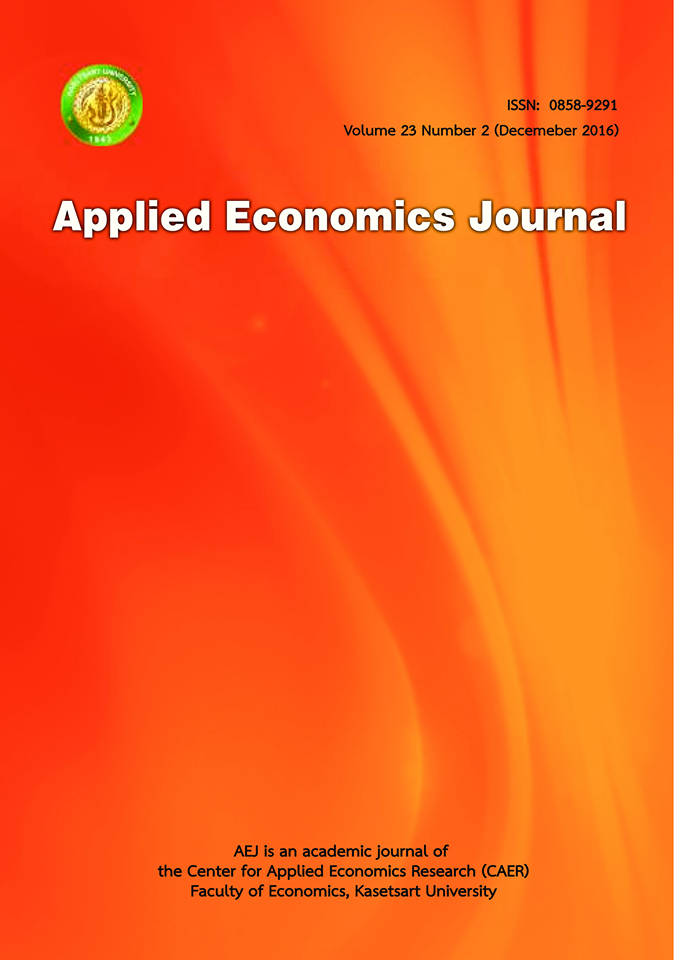Validity of Internet-based Stated Preference Data in Modeling Waterfall Recreation Site Choice
Main Article Content
Abstract
This study aims to validate the use of stated preference (SP) data collected from self-administered internet survey in modeling recreational demand. Variety of tests and measures are conducted to test whether the internet SP data yields consistent information with in-person interview SP data. The probabilistic conditional logit model is used to analyze waterfall site choices of day-trip recreationists. For preference homogeneity test, the underlying preference structure of the internet SP data is not statistically different from that observed from revealed preference (RP) data, whereas the underlying preference structure observed from the SP data – which was a part of the RP survey – is not always the same as that observed from the RP data. For predictive ability test, variety of tests and measures indicate that the in-person interview SP data is not always superior to the internet SP data. With the caveat of confounding sample frames, the findings of both tests consistently suggest that the recreational site choice models that use in-person interview SP data are not always superior to the models that use internet SP data. Our findings do not support what is often assumed that the SP survey which administers in-person would provide superior data quality. The study indicates a great potential of internet survey as an alternative survey mode for the hypothetical study of recreational demand.
Article Details
The paper is published under CC BY-NC-ND, in which the article is freely downloaded and shared in its original form non-commercially and its citation details are identified.


